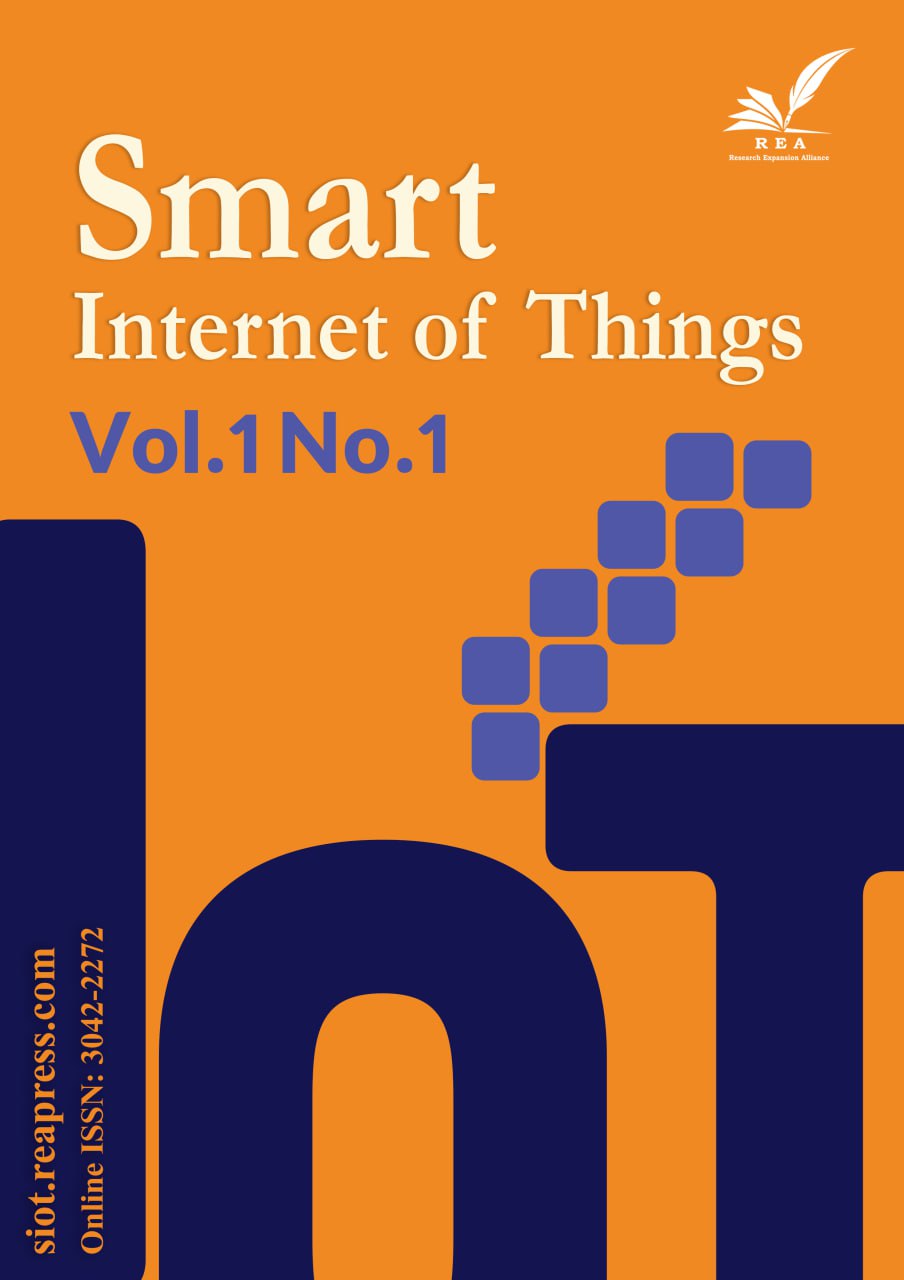Optimizing Cloud Performance: A Comprehensive Study of Load Balancing Strategies and Algorithms
Abstract
Cloud computing is essentially a big system of interconnected servers that store data and run programs over the internet. As this technology grows, it's important to ensure it runs smoothly and efficiently. One way to do this is through load balancing, where tasks and data are distributed evenly across the servers to avoid overloading any one of them. However, achieving effective load balancing can be challenging due to factors like the geographical spread of servers and differences in their capabilities. In our study, we delved into various load balancing strategies used in cloud computing, including Min-Min, Max-Min, Least Connection, Source Hash, Least Bandwidth, and Round Robin. While these strategies are helpful in optimizing performance, they also come with their own set of limitations and challenges. By examining the pros and cons of different methods, our study gives us a better understanding of how load balancing works in cloud computing right now. It also helps us see how we can make things better in the future. We want to keep improving cloud computing so it can handle all the tasks it needs to in today's digital world. Our research helps us learn more about cloud computing and how we can make it stronger and more efficient in the years to come.
Keywords:
Cloud Computing, Load balancing, Scheduling AlgorithmsReferences
- [1] [1] Pradeep, K., & Jacob, T. P. (2016). Comparative analysis of scheduling and load balancing algorithms in cloud environment. 2016 international conference on control, instrumentation, communication and computational technologies (ICCICCT) (pp. 526–531). IEEE.
- [2] [2] Aslam, S., & Shah, M. A. (2015). Load balancing algorithms in cloud computing: a survey of modern techniques. 2015 national software engineering conference (NSEC) (pp. 30–35). IEEE.
- [3] [3] Alkhatib, A. A. A., Alsabbagh, A., Maraqa, R., & Alzubi, S. (2021). Load balancing techniques in cloud computing: Extensive review. Advances in science, technology and engineering systems journal, 6(2), 860–870. https://dx.doi.org/10.25046/aj060299
- [4] [4] Shah, N., & Farik, M. (2015). Static load balancing algorithms in cloud computing: challenges & solutions. International journal of scientific & technology research, 4(10), 365–367.
- [5] [5] Chen, H., Wang, F., Helian, N., & Akanmu, G. (2013). User-priority guided min-min scheduling algorithm for load balancing in cloud computing. 2013 national conference on parallel computing technologies (PARCOMPTECH) (pp. 1–8). IEEE.
- [6] [6] Ghosh, T. K., Goswami, R., Bera, S., & Barman, S. (2012). Load balanced static grid scheduling using max-min heuristic. 2012 2nd IEEE international conference on parallel, distributed and grid computing (pp. 419–423). IEEE.
- [7] [7] Mohapatra, H., & Rath, A. K. (2019). Fault tolerance in WSN through PE-LEACH protocol. IET wireless sensor systems, 9(6), 358–365. https://doi.org/10.1049/iet-wss.2018.5229
- [8] [8] Alankar, B., Sharma, G., Kaur, H., Valverde, R., & Chang, V. (2020). Experimental setup for investigating the efficient load balancing algorithms on virtual cloud. Sensors, 20(24), 7342. https://doi.org/10.3390/s20247342
- [9] [9] Rahmika, A. R., Tahir, Z., Paundu, A. W., & Zainuddin, Z. (2023). Web server load balancing mechanism with least connection algorithm and multi-agent system. CommIT (communication and information technology) journal, 17(2), 245–258. https://doi.org/10.21512/commit.v17i2.8872
- [10] [10] Yang, M., Wang, H., & Zhao, J. (2015). Research on load balancing algorithm based on the unused rate of the cpu and memory. 2015 fifth international conference on instrumentation and measurement, computer, communication and control (IMCCC) (pp. 542–545). IEEE.
- [11] [11] Ma, C., & Chi, Y. (2022). Evaluation test and improvement of load balancing algorithms of nginx. IEEE access, 10, 14311–14324.
- [12] [12] Mohapatra, H., & Rath, A. K. (2019). Detection and avoidance of water loss through municipality taps in India by using smart taps and ICT. IET wireless sensor systems, 9(6), 447–457. https://doi.org/10.1049/iet-wss.2019.0081
- [13] [13] Alhaidari, F., & Balharith, T. Z. (2021). Enhanced round-robin algorithm in the cloud computing environment for optimal task scheduling. Computers, 10(5), 63. https://doi.org/10.3390/computers10050063
- [14] [14] Pradhan, P., Behera, P. K., & Ray, B. N. B. (2016). Modified round robin algorithm for resource allocation in cloud computing. Procedia computer science, 85, 878–890. https://doi.org/10.1016/j.procs.2016.05.278
- [15] [15] Mohapatra, H., & Rath, A. K. (2020). Fault-tolerant mechanism for wireless sensor network. IET wireless sensor systems, 10(1), 23–30. https://doi.org/10.1049/iet-wss.2019.0106
- [16] [16] Kaur, R., & Luthra, P. (2014). Load balancing in cloud system using max min and min min algorithm. International journal of computer applications, 975, 8887.
- [17] [17] Kumar, P., & Kumar, R. (2019). Issues and challenges of load balancing techniques in cloud computing: A survey. ACM computing surveys (CSUR), 51(6), 1–35. https://dl.acm.org/doi/abs/10.1145/3281010
- [18] [18] Mohapatra, H., & Rath, A. K. (2020). Survey on fault tolerance-based clustering evolution in WSN. IET networks, 9(4), 145–155. https://doi.org/10.1049/iet-net.2019.0155
- [19] [19] Martin, R., Menth, M., & Hemmkeppler, M. (2007). Accuracy and dynamics of multi-stage load balancing for multipath internet routing. 2007 IEEE international conference on communications (pp. 6311–6318). IEEE.
- [20] [20] Mohapatra, H., & Rath, A. K. (2019). Fault tolerance through energy balanced cluster formation (ebcf) in WSN. Smart innovations in communication and computational sciences: proceedings of icsiccs-2018 (pp. 313–321). Springer.
- [21] [21] Mohapatra, H., & Rath, A. K. (2022). IoE based framework for smart agriculture: Networking among all agricultural attributes. Journal of ambient intelligence and humanized computing, 13(1), 407–424. DOI:10.1007/s12652-021-02908-4
- [22] [22] Derakhshan, M., & Bateni, Z. (2018). Optimization of tasks in cloud computing based on max-min, min-min and priority. 2018 4th international conference on web research (ICWR) (pp. 45–50). IEEE.
- [23] [23] Mohapatra, H., & Rath, A. K. (2021). An IoT based efficient multi-objective real-time smart parking system. International journal of sensor networks, 37(4), 219–232. https://doi.org/10.1504/IJSNET.2021.119483
- [24] [24] Khan, B. U. I., Olanrewaju, R. F., Morshidi, M. A., Mir, R. N., Kiah, M. L. B. M., & Khan, A. M. (2022). Evolution and analysis of secure hash algorithm (Sha) family. Malaysian journal of computer science, 35(3), 179–200. https://doi.org/10.22452/mjcs.vol35no3.1


